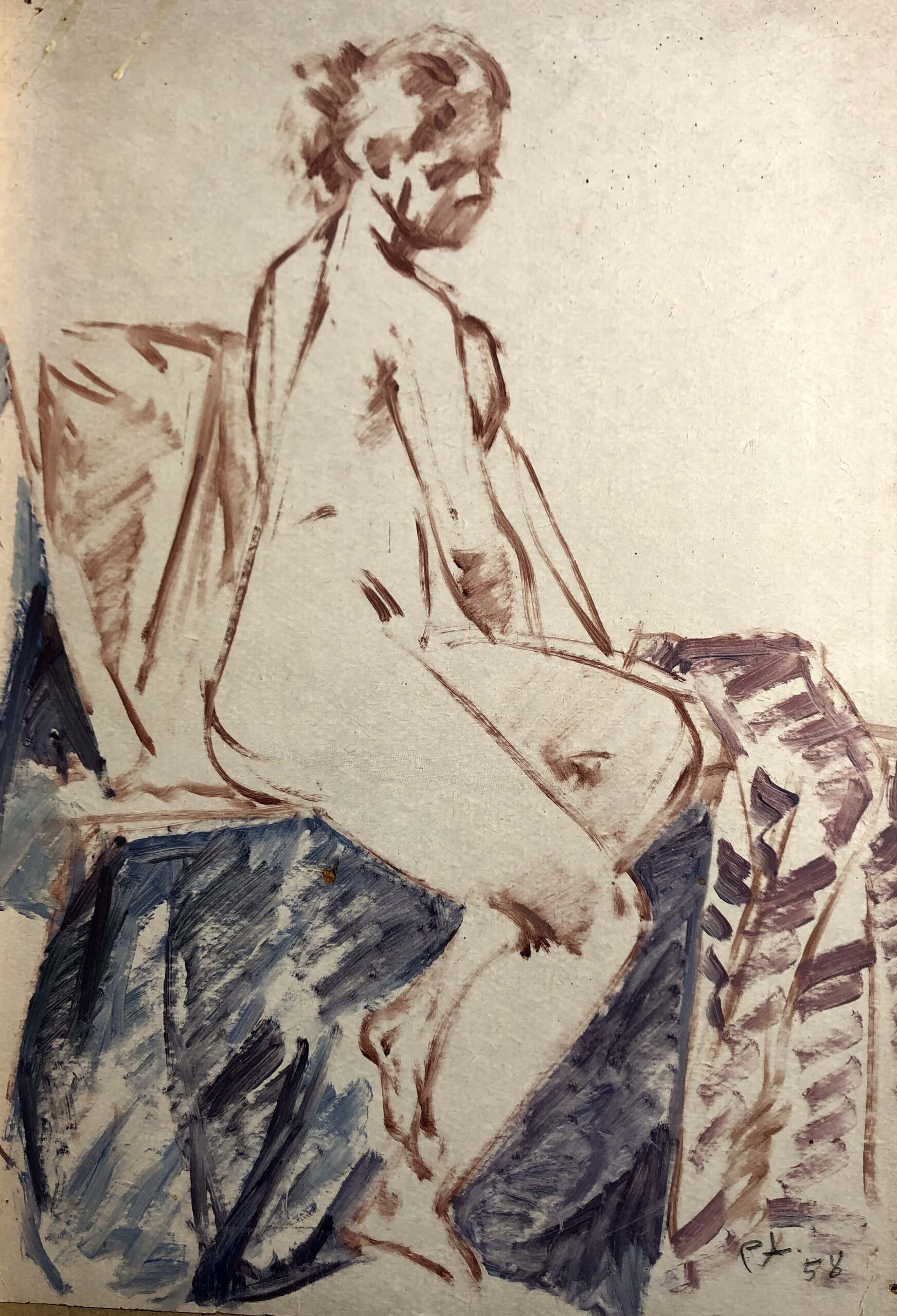Priidu Aavik (1905 – 1991). Seated Nude. (1958)
€1150
Oil on cardboard (brown)
49.5 x 34.5 cm
Bottom right – PA . 58
A briskly and firmly sketched nude.
Priidu Aavik was born as the fifth child in a family of nine children of schoolteacher Eduard Aavik.
At the age of 17, she moved to Tallinn, where she worked and studied at Ants Laikmaa’s studio school.
In 1934, Aavik entered the Pallas Art School (Tartu), where she studied under Nikolai Triik and Ado Vabbe until graduating in 1938. She then moved to Tallinn, where she established her own studio.
In 1938, she traveled to Paris to continue her studies, but was forced to return when the war broke out.
Upon returning to Estonia, he worked as the temporary acting director of the Tartu State Art Institute in 1944–1946, as the chairman of the board of the Estonian Soviet Artists’ Union in 1945–1947, and as the chairman of the Tallinn Art Foundation in 1947–1948. In 1951–1953, he was the chief artist of the Estonian pavilion at the All-Union Agricultural Exhibition and in 1954–1962, as the chief artist of the Estonian SSR National Economic Exhibition.
His work mainly includes history, landscape and environmental paintings (mostly on the themes of fishing life). He participated in a creative trip on a fishing trawler in 1942–1943 on the Norwegian Sea and in 1944–1945 on the Atlantic Ocean and in Nigeria. In the summer, he loved to paint the life and landscapes of coastal fishermen in Prangli. He began to participate in exhibitions starting from the Pallas Art College graduates’ exhibition held in Tartu in 1938.
Priidu Aavik was married to Helmi Trei, the sister of artist Salome Trei.
| Dimensions | 49.5 × 34.5 cm |
|---|
Oil on cardboard (brown)
49.5x 34.5 cm
Bottom right – PA . 58
A briskly and firmly sketched nude.
Priidu Aavik was born as the fifth child in a family of nine children of schoolteacher Eduard Aavik.
At the age of 17, she moved to Tallinn, where she worked and studied at Ants Laikmaa’s studio school.
In 1934, Aavik entered the Pallas Art School (Tartu), where she studied under Nikolai Triik and Ado Vabbe until graduating in 1938. She then moved to Tallinn, where she established her own studio.
In 1938, she traveled to Paris to continue her studies, but was forced to return when the war broke out.
Upon returning to Estonia, he worked as the temporary acting director of the Tartu State Art Institute in 1944–1946, as the chairman of the board of the Estonian Soviet Artists’ Union in 1945–1947, and as the chairman of the Tallinn Art Foundation in 1947–1948. In 1951–1953, he was the chief artist of the Estonian pavilion at the All-Union Agricultural Exhibition and in 1954–1962, as the chief artist of the Estonian SSR National Economic Exhibition.
His work mainly includes history, landscape and environmental paintings (mostly on the themes of fishing life). He participated in a creative trip on a fishing trawler in 1942–1943 on the Norwegian Sea and in 1944–1945 on the Atlantic Ocean and in Nigeria. In the summer, he loved to paint the life and landscapes of coastal fishermen in Prangli. He began to participate in exhibitions starting from the Pallas Art College graduates’ exhibition held in Tartu in 1938.
Priidu Aavik was married to Helmi Trei, the sister of artist Salome Trei.


